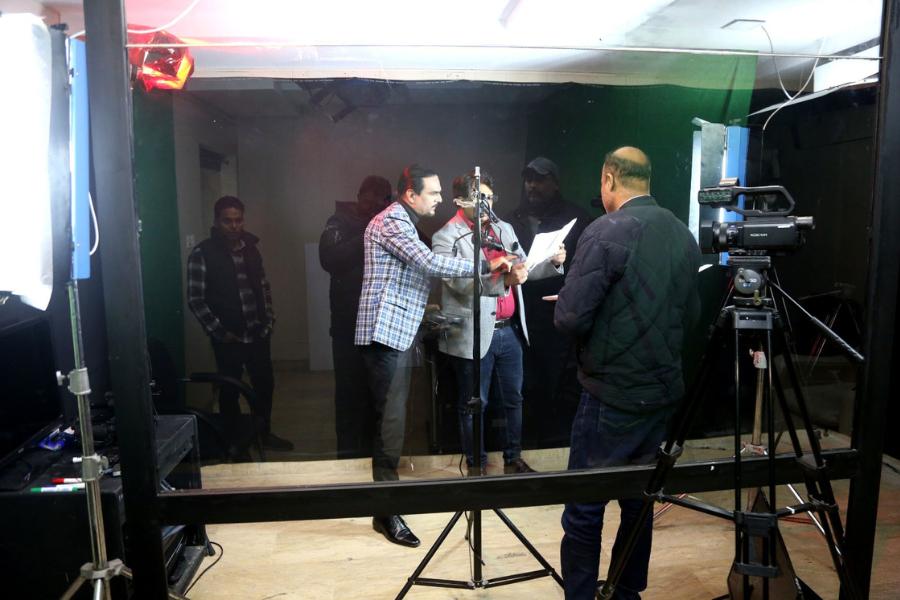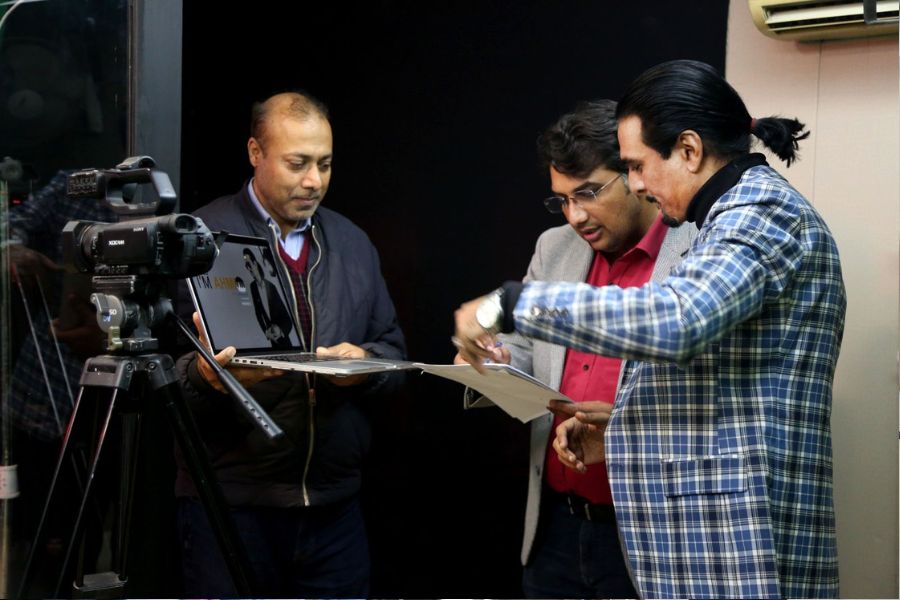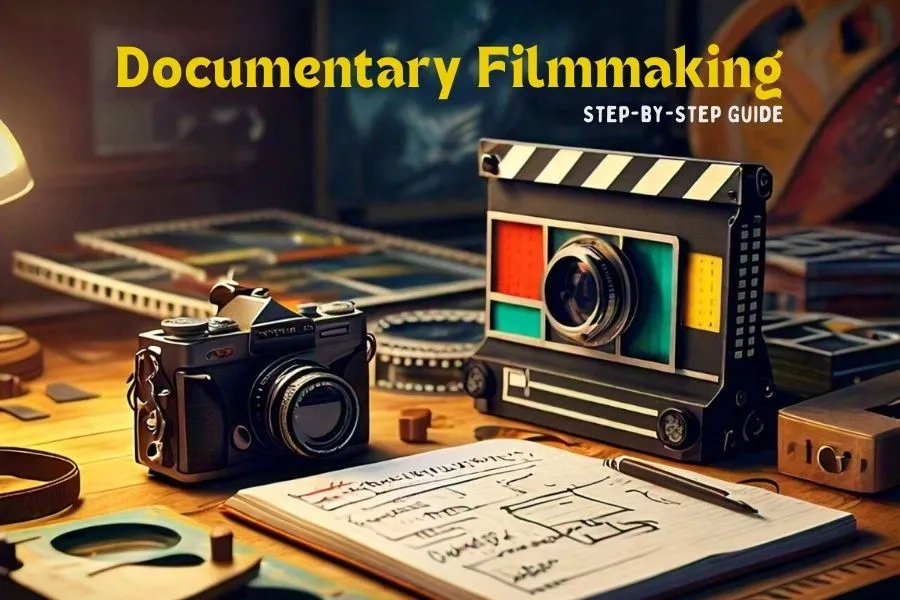Table of Contents
Introduction
What is Documentary Filmmaking?
Documentary filmmaking is the art of crafting non-fictional films that capture real-life events, people, and stories. Unlike fictional films, documentaries aim to inform, educate, and sometimes persuade their audience by presenting factual narratives.
Importance of Documentaries in Modern Media
In today’s fast-paced world, documentaries play a crucial role in raising awareness about social, political, and environmental issues. They offer an in-depth look at subjects that mainstream media might overlook, providing a platform for underrepresented voices and stories.
Pre-Production Phase

Choosing Your Topic
The first step in making a documentary is selecting a compelling topic. It should be something you are passionate about and believe will resonate with your audience. Consider the current trends, societal issues, and your unique perspective on the topic.
Example: Let’s say you’re passionate about environmental issues and have witnessed the decline of bee populations in your area. This could be a compelling documentary topic.
Research and Development
Once you’ve chosen your topic, dive deep into research. Gather as much information as possible from books, articles, interviews, and archives. This will help you understand the subject better and shape your narrative.
Example: Research the history of beekeeping, the science behind colony collapse disorder, and interview beekeepers about their experiences. You could also explore archival footage of healthy bee populations.
Writing a Compelling Treatment
A treatment is a detailed outline of your documentary, including its structure, tone, and style. It serves as a roadmap for your project and is essential for pitching your idea to potential investors and collaborators. Make it engaging and comprehensive.
Example:
Title: Disappearing Buzz: A Story of Bees
Logline: A passionate beekeeper and filmmaker investigates the mysterious decline of bee colonies, uncovering the threats to our food system and the delicate balance of nature.
Structure: The treatment would outline the documentary’s flow, starting with the filmmaker’s personal connection to bees, then moving to the scientific research, and finally exploring solutions and raising awareness.
Creating a Budget
Budgeting is a critical part of the pre-production phase. Outline all potential expenses, including equipment, crew salaries, travel, and post-production costs. Having a clear budget helps you manage your finances and avoid unexpected expenses down the line.
Example: List essential equipment like cameras, sound recorders, and editing software. Factor in travel costs if filming beekeepers in different locations. Consider potential crew needs like an assistant cameraperson or interviewer.
Planning Your Documentary
Building Your Team
A documentary is a collaborative effort. Assemble a team of skilled professionals, including a director of photography, sound engineer, editor, and production assistants. Each member should share your vision and bring their expertise to the project.
Securing Funding and Sponsorship
Funding is often a significant challenge in documentary filmmaking. Explore various options such as grants, crowdfunding, and sponsorships. Platforms like Kickstarter and Indiegogo can be useful for raising funds from a global audience.
Scheduling and Planning
Create a detailed production schedule outlining each phase of the project. This includes pre-production tasks, filming days, and post-production activities. A well-planned schedule ensures that your project stays on track and within budget.
Production Phase
Filming Techniques
Filming a documentary requires a mix of technical skills and creativity. Here are some essential techniques:
Interviewing Subjects
Conducting interviews is a cornerstone of documentary filmmaking. Prepare your questions in advance, but remain flexible to follow interesting leads. Make your subjects feel comfortable to elicit authentic responses.
Capturing B-Roll Footage
B-Roll footage includes supplementary shots that enhance your narrative, such as scenic views, action shots, and close-ups. These clips add depth and context to your documentary, making it visually engaging.
Managing Your Crew
Effective communication and leadership are crucial for managing your crew. Ensure everyone understands their roles and responsibilities. Encourage a cooperative climate where colleagues feel esteemed and inspired.
Equipment Essentials
Invest in high-quality equipment to achieve professional results. Essential gear includes cameras, microphones, lighting kits, and tripods. Renting equipment can be a cost-effective option if you have a limited budget.
Post-Production Phase
Editing Your Documentary
Editing is where your documentary comes to life. Here’s how to approach it:
Assembling the Rough Cut
Start by creating a rough cut, arranging your footage in a coherent sequence. Focus on building a strong narrative and ensuring a logical flow of events.
Adding Narration and Music
Narration and music can significantly enhance your documentary. Use narration to provide context and guide your audience through the story. Select music that complements the tone and mood of your film.
Sound Design and Mixing
Sound design is the process of creating the audio landscape of your documentary. This includes dialogue, sound effects, and background noise. Proper mixing ensures that all audio elements blend seamlessly, creating an immersive experience for your audience.
Color Grading
Color grading involves adjusting the colors and lighting of your footage to create a consistent and visually appealing look. This step enhances the overall aesthetic of your documentary and can evoke specific emotions.
Distribution and Promotion
Film Festivals and Screenings
Submitting your documentary to film festivals is an excellent way to gain exposure and recognition. Research festivals that align with your documentary’s theme and audience. Hosting local screenings can also build community support and buzz.
Digital Platforms and Streaming
In the digital age, online platforms are crucial for distributing your documentary. Upload your film to streaming services like Netflix, Amazon Prime, or Vimeo. Utilize social media to reach a broader audience and engage with viewers.
Marketing Strategies
Develop a comprehensive marketing plan to promote your documentary. This can include creating a website, using social media, and collaborating with influencers. Effective marketing helps attract viewers and build a loyal following.
Tips and Tricks

Engaging Your Audience
To keep your audience engaged, focus on storytelling. Use a mix of interviews, B-Roll, and narration to create a dynamic and compelling narrative. Keep the pace steady and avoid overwhelming your viewers with too much information at once.
Storytelling Techniques
Compelling narrating includes making a profound association with your crowd. Highlight personal stories and experiences to humanize your subjects. Use suspense, humor, and surprise to maintain interest and evoke emotions.
Staying Ethical in Non-Fiction Filmmaking
Ethics are paramount in documentary filmmaking. Always strive for accuracy and fairness. Respect your subjects’ privacy and obtain proper consent for interviews and footage. Avoid sensationalism and remain truthful to your story.
Conclusion
Recap of the Documentary Filmmaking Process
Documentary filmmaking is a multifaceted process that involves careful planning, creative execution, and meticulous editing. From choosing a topic to distributing your film, each step is crucial to crafting a compelling and impactful documentary.
Encouragement for Aspiring Filmmakers
If you’re passionate about storytelling and bringing real-life narratives to light, documentary filmmaking is a rewarding pursuit. Embrace the challenges and stay committed to your vision. With dedication and perseverance, you can create a documentary that resonates with audiences and makes a difference.
FAQs
What is the most important part of making a documentary?
The most important part is storytelling. A compelling narrative that engages and informs your audience is key to a successful documentary.
How do I find funding for my documentary?
You can find funding through grants, crowdfunding platforms, sponsorships, and film festivals. Research various funding sources and tailor your pitch to align with their interests.
What equipment do I need for documentary filmmaking?
Essential equipment includes a high-quality camera, microphones, lighting kits, and tripods. Depending on your budget, you can choose to buy or rent this equipment.
What amount of time does it require to make a narrative?
The length shifts relying upon the venture’s extension and intricacy. On average, it can take anywhere from several months to a few years to complete a documentary.
Can I make a documentary by myself?
Yes, it’s possible to make a documentary on your own, especially with advances in technology. However, having a team can significantly enhance the quality and scope of your project.

